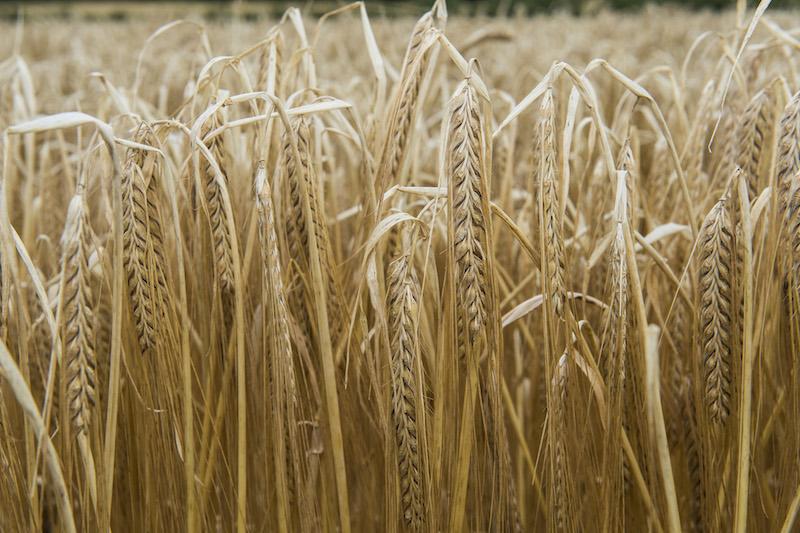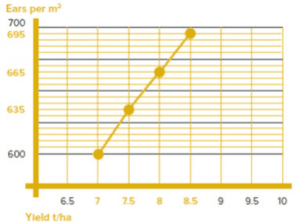Get a 24 hour weather forecast

Grain yield in cereals is determined by three factors:
Number of ears per m2 X Grains per ear X Average grain weight = Yield
Multiplying the three factors together gives us the yield of a cereal crop. Increasing grain weight in cereals has only a small impact on yield. There is a strong relationship between grain number/m2 (number of ears per m2 X grains per ear) but only a weak relationship between average grain weight and yield.
There is significant opportunity to increase the number of ears per m2 in barley and the number of ears per m2 has a strong impact on yield as shown in figure 1.

Figure 1: Relationship between ear number per m2 and yield in spring barley at Kildalton, 2009
The number of grains per ear is dependent on the number of fertile spikelets on the ear central stem. In barley, each spikelet has only one floret while wheat has two to five florets. Therefore, while it is possible to achieve some compensation for low ear numbers as crops with lower tiller numbers produce more grains per ear, the scope is limited in barley with this ability 30-50% less than in wheat.
Key point: Wheat has a higher ability to compensate for ‘thin’ crops than barley. ‘Thick’ crops of barley are essential for high yields.
Therefore to achieve a high yield in barley it is important to maximise tiller production during early canopy growth and to maintain as many of these tillers as possible until harvest. This article focuses on the importance early disease control in maximising tiller numbers but there are a number of other important practices in maximising tiller numbers including:
Disease control
The wet weather diseases Rhynchosporium and Net Blotch are the biggest disease threats in Ireland and have the greatest potential to reduce yield. Other leaf diseases to look out for are Mildew, Ramularia and Brown Rust.